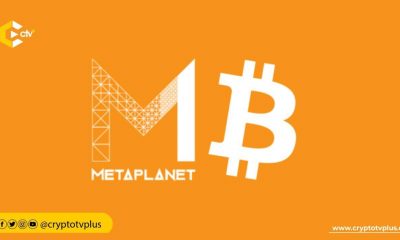Education
Stacks (STX): Building with Bitcoin & Layer-2 Smart Contracts

In recent years, cryptocurrency has garnered significant attention as an increasing number of individuals and organizations seek ways to participate in the digital economy. Stacks (STX) is an innovative cryptocurrency within the Stacks ecosystem, a protocol that enables decentralized apps (dApps) on the Stacks network while utilizing the features of the Bitcoin blockchain.
The Stacks blockchain is powered by STX and built on top of the Bitcoin blockchain. The Stacks blockchain enables the execution of smart contracts off-chain before linking them to the Bitcoin blockchain for increased security and trustlessness. This strategy, referred to as “layer-2 smart contracts,” is intended to alleviate some of the scalability and security problems that have troubled other smart contract systems.
Moreover, the Stacks blockchain employs its consensus algorithm called Proof of Transfer (PoX). This provides a method for STX holders to participate in rewards programs while also assisting in maintaining the network’s security and stability.
In addition to its consensus mechanism, the STX token plays an important role in the Stacks ecosystem. STX is used as the native currency for the Stacks blockchain and can be used for other purposes, including paying transaction fees, staking, and purchasing digital goods like NFTs and services on Stacks-based dApps.
Stacks Use Cases & Adoption
One of the use cases for Stacks is in decentralized finance (DeFi). Stacks seeks to provide a secure and scalable platform for building DeFi applications that would enable users to access a wide range of services and products without having to rely on centralized intermediaries.
Stacks has a growing number of real-world use cases, including the Stacks-based dApp, Hiro Wallet, and the Xverse wallet for managing digital assets. Other Stacks-based dApps, such as Sigle and ARK, provide decentralized solutions for blogging and file storage, respectively.
Stacks has also gained significant traction in the blockchain and cryptocurrency communities. The Stacks project has received funding, partnerships, and support from several notable investors and institutions, including Union Square Ventures. The Stacks ecosystem and community include a growing number of dApps (such as BlockSurvey, Alex, Gamma, etc.) as well as a thriving community of developers and contributors. This community is actively working to build out the Stacks ecosystem and promote the adoption of Stacks-based dApps and services.
The value of Stacks (STX) is closely tied to the level of adoption of its platform. A rise in the number of users who depend on the Stacks platform will create a greater demand for STX crypto tokens and STX NFTs, thereby increasing their value. Furthermore, the success of smart contracts that are powered by Clarity may impact the value of STX, since users and developers will require STX to utilize these contracts. Clarity is a Lisp-styled smart contract language designed for the Stacks blockchain. The demand for STX may rise if Clarity-powered smart contracts achieve widespread adoption and success.
Stacks (STX) Mining
Following the Stacks PoX mechanism, STX holders participate in block validation by locking up their tokens as collateral, and the protocol uses Bitcoin as the “proof of transfer.” In other words, miners on the Stacks network only hold STX tokens and send a certain amount of Bitcoin to the network to sign their participation. STX holders who participate in block validation earn Bitcoin rewards, as well as a portion of the transaction fees paid by users on the network. This approach is designed to be more energy-efficient and accessible to a wide range of users than other mechanisms like PoW and PoS.
Miners use the OP RETURN in Bitcoin transactions to add the block hash of each Stacks block to the Bitcoin chain to create new blocks in the Stacks blockchain. As a result, the Stacks blockchain’s state is determined by the Bitcoin blockchain, which benefits from Bitcoin immutability. To mine new STX tokens, Stacks miners use previously mined BTC rather than electricity.
How to Buy and Store STX
Several exchanges offer STX for purchase and trading. Some popular exchanges that support STX include Binance, Huobi, and OKEx. Before purchasing STX, an account will have to be set up with any of the exchanges, before a purchase is initiated.
Once STX is purchased, it is important to store it in a secure wallet. Several wallets support STX, including the Stacks Wallet, Ledger, and Trezor. A self-custodial wallet that could stand as an option for STX is Xverse, a self-custodial hot wallet for Stacks. It includes an in-app browser for accessing Bitcoin dApps, holding NFTs, and earning Bitcoin rewards through a Stacking pool. Additionally, the Xverse app can be installed as a Chrome browser extension where users can view their Bitcoin NFTs on a desktop computer.
Conclusion
With its focus on privacy, security, and interoperability, as well as improving on the Bitcoin features, Stacks has the potential to revolutionize the way that we interact with decentralized applications and services. While Stacks is still a relatively new project, it has already gained significant traction in the blockchain and cryptocurrency communities by housing more than 80 decentralized applications.
Read also;
Will Mt. Gox Bitcoin repayment affect the market?
What do you think of this article? Share comments below.

























Pingback: Stacks (STX): Building with Bitcoin & Layer-2 Smart Contracts by Ifeoma Joy Okorie – CryptoTvplus Events: NFT, DeFi, Bitcoin, Ethereum, Altcoin Events
Pingback: Create, Exchange Synthetic & Decentralized assets on Synthetix | CryptoTvplus: DeFi, NFT, Bitcoin, Ethereum Altcoin, Cryptocurrency & Blockchain News, Interviews, Research, Shows